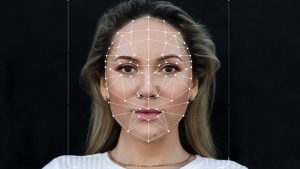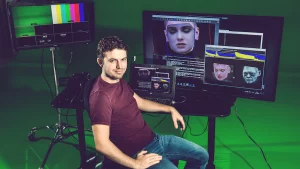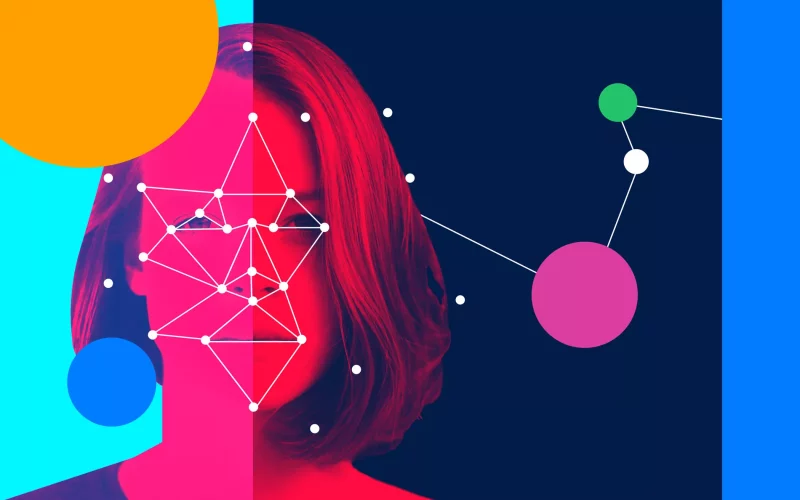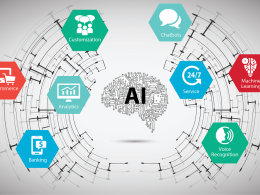The rapid advancements in artificial intelligence (AI) are reshaping the way media is created, consumed, and perceived. One of the most exciting innovations in this space is synthetic media—media content created or modified by AI algorithms, including videos, images, audio, and even interactive experiences. Synthetic media is unlocking new possibilities for content creation, personalized media, and immersive digital experiences that were once unimaginable. As industries embrace this technology, synthetic media is setting the stage for a new era in digital content.
Understanding Synthetic Media

Synthetic media refers to content generated or altered by AI, often through sophisticated models like deep learning, machine learning, and Generative Adversarial Networks (GANs). Unlike traditional media, which relies on human creators, synthetic media can produce highly realistic audio, images, videos, and text. This technology is already influencing fields such as marketing, entertainment, education, and social media.
Some common forms of synthetic media include:
- Deepfakes: AI-generated videos and images that mimic real people, often used to create lifelike but fictional content.
- Text-to-Image Generation: AI can convert written descriptions into images, a feature popularized by tools like DALL-E and Midjourney.
- Voice Synthesis: AI models that replicate human speech patterns, allowing text-to-speech systems to sound increasingly natural.
By bridging the gap between creativity and technology, synthetic media enables rapid content creation, personalization, and more engaging experiences.
Benefits of Synthetic Media
- Enhanced Content Creation EfficiencySynthetic media allows for faster and more efficient content production, minimizing the time and resources traditionally required. Instead of labor-intensive photoshoots or video production, synthetic media can generate visuals and audio at scale.
- Cost SavingsTraditional content production, including hiring actors, renting studios, and editing, can be costly. AI-generated media minimizes these costs, making high-quality content creation more accessible for small businesses and startups.
- Personalization and CustomizationSynthetic media enables brands to personalize content on an unprecedented scale. For instance, businesses can create custom videos for each customer, tailor ads to individual preferences, or even generate avatars that mirror users’ traits for a personalized experience.
- Innovative Learning and Training SolutionsAI-created media is transforming education and training by making content more interactive and realistic. Virtual simulations, AI-driven instructors, and lifelike avatars enhance the learning experience in fields like medicine, aviation, and corporate training.
- Expansion of Creative PossibilitiesAI’s ability to generate unique, imaginative media offers creatives a new toolkit. Artists, musicians, and filmmakers can use AI to develop new art forms, experiment with styles, and push creative boundaries in ways that were previously impossible.
Real-World Applications and Case Studies
-
Marketing and Advertising
Case Study: Coca-Cola’s Personalized Ads Coca-Cola used synthetic media to generate personalized ads based on audience preferences. By using AI, they created unique, region-specific content tailored to local tastes and languages, increasing engagement and fostering a sense of personal connection with their brand.
-
Entertainment Industry
Example: Digital Resurrections in Film In recent years, synthetic media has allowed filmmakers to digitally recreate famous actors who have passed away, such as Carrie Fisher in Star Wars. This technology provides filmmakers with creative freedom, allowing them to complete films and create scenes that otherwise would be impossible.
-
Education and Training
Case Study: Virtual Reality (VR) Training for Surgeons Medical institutions have embraced synthetic media to train surgeons through VR and AI-powered simulations. These simulations provide realistic, hands-on training environments, significantly improving the precision and confidence of medical practitioners before they enter real-world procedures.
-
Customer Service
Example: Virtual Assistants and Chatbots Companies like IBM and Google are using synthetic media to power chatbots and virtual assistants with lifelike voice synthesis. These bots can interact with customers in real-time, offering a seamless and human-like service experience, enhancing customer satisfaction and streamlining support operations.
-
Gaming and Social Media
Example: Avatars in Virtual Worlds Games like Fortnite and social platforms such as VRChat allow users to create personalized avatars powered by synthetic media. These avatars can mirror users’ expressions and movements, creating an immersive experience that resonates deeply with users in digital environments.
Ethical Considerations and Challenges

- Privacy and ConsentOne of the primary concerns surrounding synthetic media is the potential for misuse, especially in deepfakes. When used without consent, AI-generated media can infringe on privacy, creating ethical and legal complications.
- Misuse of Deepfakes and MisinformationDeepfake technology has already raised concerns about misinformation, as it can create convincing fake news or impersonations. Policies, regulations, and ethical guidelines are crucial to preventing misuse and ensuring AI is used responsibly.
- Bias in AI AlgorithmsSince AI models learn from existing data, they may inadvertently adopt and replicate biases present in that data. This can result in biased content, which can be harmful or offensive, emphasizing the need for inclusive and well-monitored AI training data.
- Intellectual Property IssuesSynthetic media can challenge traditional copyright laws, as AI-generated content might not clearly fall under ownership categories. Defining intellectual property rights and ownership for AI-created content will be vital as synthetic media continues to evolve.
The Future of Synthetic Media
The synthetic media landscape is evolving rapidly, promising new possibilities in content creation, communication, and entertainment. As AI technology advances, synthetic media will likely become even more realistic and accessible. Future developments might include AI-powered content studios, where brands can create lifelike content at the click of a button, or advanced virtual worlds with avatars indistinguishable from humans.
However, as synthetic media becomes more prevalent, the need for regulation, transparency, and responsible usage will grow. Ensuring ethical AI practices, user consent, and respect for intellectual property will be crucial in navigating the future of synthetic media.
Conclusion
Synthetic media is undoubtedly one of the most transformative innovations of the digital age, changing how we create, interact, and perceive content. While it brings a host of benefits, from cost savings to new creative opportunities, synthetic media also poses challenges that require careful consideration and regulation. As we move forward, striking a balance between innovation and ethics will ensure that synthetic media remains a force for positive change across industries.










